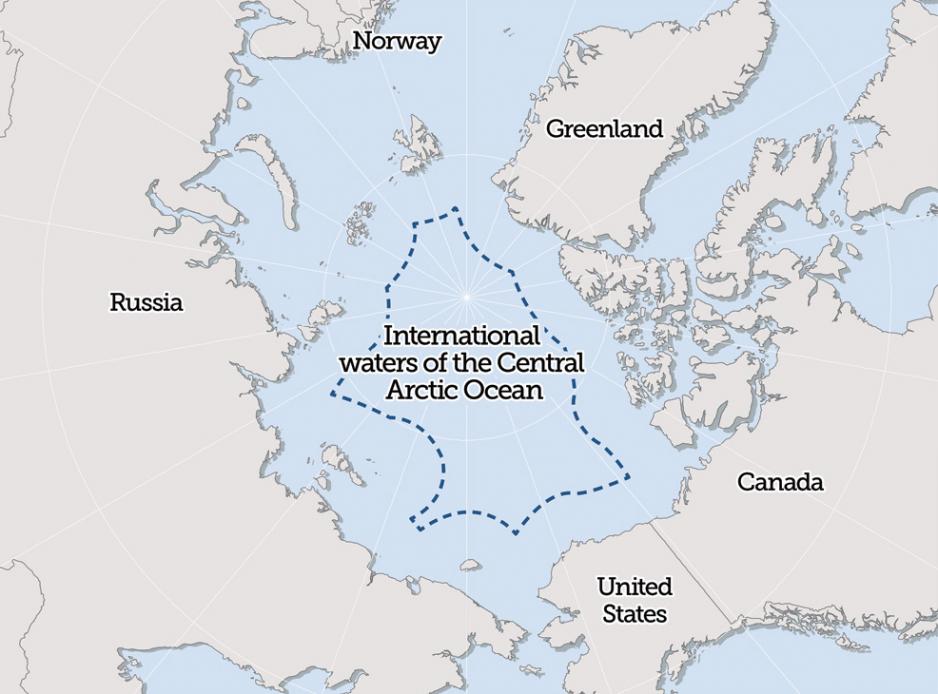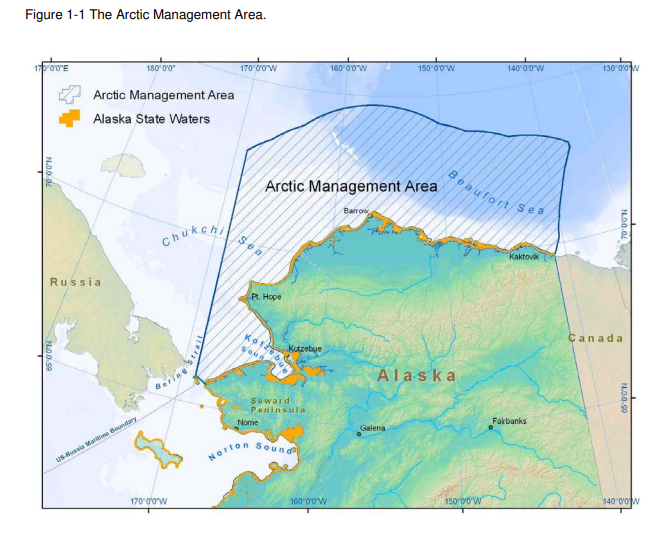Alaska Investigates Possibilities for Commercial Fishing in Arctic Waters

Crab boats dock in Dutch Harbor, located on the Aleutian Islands in Alaska. (Photo: National Institute for Occupational Safety and Health / Wikimedia Commons).
Anchorage (High North News): "We do not want to be left onshore while Russia and other countries fish in Arctic waters,” said Alaska Department of Fish and Game Commissioner Doug Vincent-Lang. While Russia still honours international fishing agreements, they benefit from commercial harvest of pollock north of the Bering Strait, while Alaska is still banned from the same thing.
Currently, there is a ban on commercial fishing in the Arctic, after nine nations and the European Union signed the Central Arctic Ocean Fisheries Agreement – officially known as the Agreement to Prevent Unregulated High Seas Fisheries in the Central Arctic Ocean – in 2018.
The Agreement came into effect on 25 June 2021 and was considered an important step towards ensuring that any future fishing in the central Arctic Ocean would be carried out sustainably. The area is currently covered by ice for large parts of the year, and there are no commercial fisheries.
If the ice cover is reduced in the coming decades, fishing may become possible.
The EU - with Denmark, Sweden, and Finland - is a party to the agreement together with five Arctic neighboring states: Canada, Iceland, the Kingdom of Norway, Russia, and the United States of America. The agreement was also signed by China Japan and the Republic of Korea as "near Arctic States".
Recently, at the Arctic Encounter Symposium in Anchorage, Alaska, the agreement received renewed interest during a debate on Sustainable Fisheries, Policy, and Ocean Economy. Especially in light of growing tension in the Arctic due to Russia's invasion of Ukraine in February 2022.
Science only
The agreement will initially be in force for a period of 16 years, until 2037. This period will be automatically extended for another five years unless one of the Parties objects. During this time, should the science indicate that some commercial fishing could be undertaken on a sustainable basis, a new agreement will require a consensus of the parties.
Until then, the treaty limits fishing in the high seas area of the Arctic to research and both the U.S. and Russia are still adhering to the Central Arctic Ocean Fisheries Agreement. In fact, officials from both countries met in Utqiagvik, Alaska in March this year to develop at a joint science plan, where also Inuit delegates took part.
By the conclusion of this meeting, a consensus was reached by the Agreements Scientific coordinating group on the contents of a key document - the Joint Program for Scientific Research and Monitoring (JPSRM) Framework.
Success story
David Balton, a former U.S. State Department diplomat who helped negotiate the agreement, took the opportunity to praise the parties for continuing to honor the agreement during a debate on sustainable fisheries, policy, and ocean economy at the Arctic Encounter Symposium in Anchorage, Alaska in March.
“There are still big challenges, but there will not be commercial fisheries in this area for at least the life of the agreement, which is 16 years,” said Balton.
“It is quite a success story,” he said.
Balton now serves as executive director of the White House’s Arctic Executive Steering Committee.
Russian pollock
However, in 2009, the U.S. government introduced the Arctic Fishery Management Plan, which, after it was approved by the North Pacific Fishery Management Council, closed 150,000 square nautical miles of state waters in Alaska to fishing north of the Bering Strait, including the Chukchi and Beaufort seas.
In Russian-controlled waters in the Chukchi Sea, a commercial pollock fishery opened for the first time in 2020, and Pacific cod has also moved into the area due to mass migration of stocks to cooler waters known as “borealization.”
As a result, the Alaska Department of Fish and Game (AFDG) is getting ready for a time when the agreement on commercial fishing in federal Arctic waters will be lifted.
Will not be left behind
Alaska Department of Fish and Game Commissioner Doug Vincent-Lang is now preparing for the end of the federal fishing ban, and announced at the Arctic Encounter Symposium that he is seeking USD 1 million in funding from the state of Alaska and USD 2 million in federal funds to research the issue.
“We see opportunities for our coastal communities to develop fisheries. And we certainly do not want to be left onshore while Russia and other countries go out and fish those waters,” he said.
If the funding is approved, Vincent-Lang will focus on research to identify biomasses and stocks north of the Bering Strait that have the ability to be developed into commercial fisheries. AFDG also plans to create a system to identify fishery participants.
“We also need to get started on what fishery management looks like. We are starting to think through those processes. We are starting to do that work”, he said.
For now, there is no commercial fishing in U.S. federal waters north of the Bering Strait, with the exception of some small harvests in the north.





